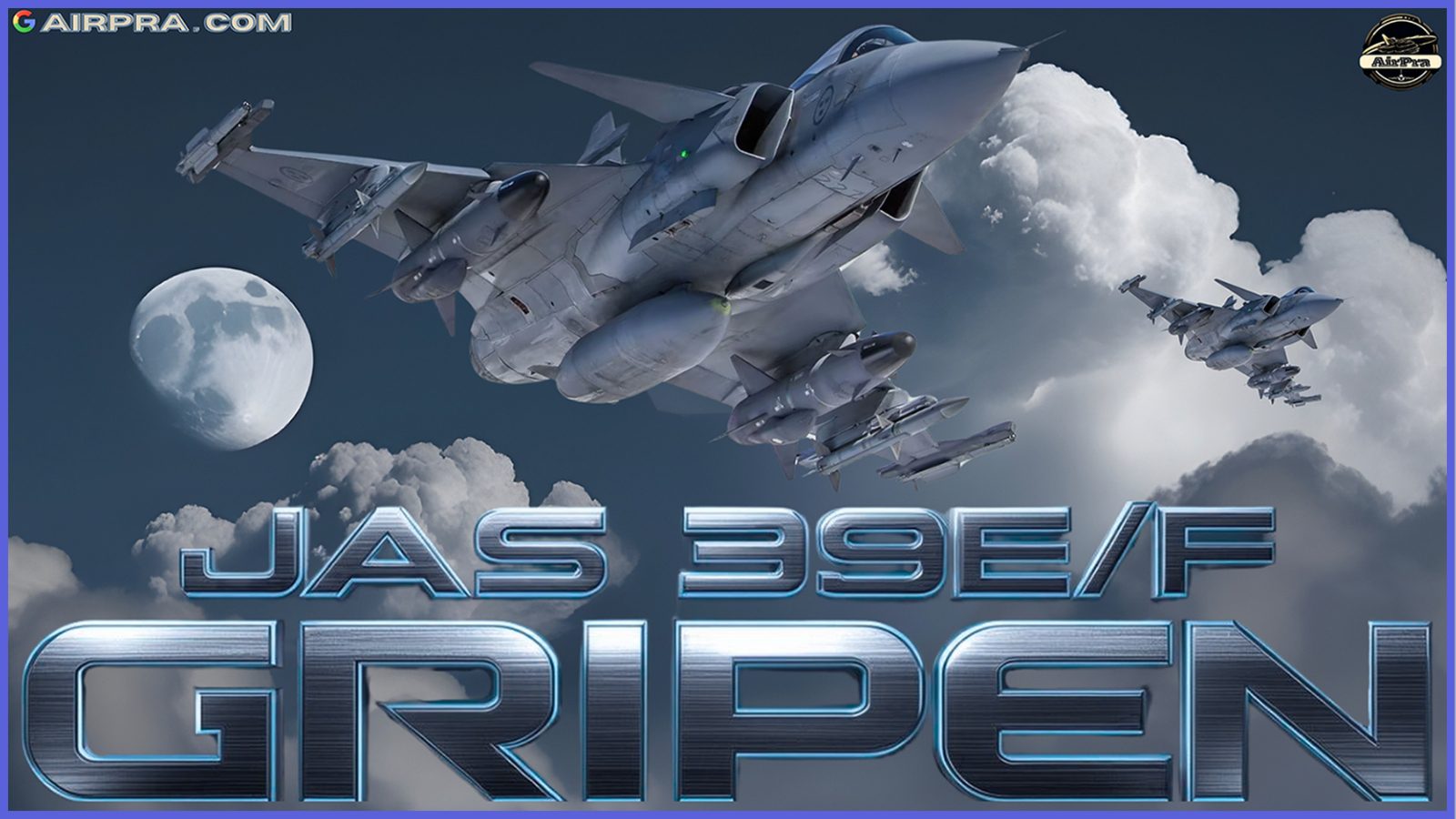The Gripen E/F represents a bold step forward in modern fighter jet technology, built to outmatch evolving aerial threats with precision and adaptability. Redefining Air Superiority — The Gripen E/F Evolution. Engineered for efficiency and performance, it combines advanced avionics, superior manoeuvrability, and multi-role capability to deliver exceptional combat power.
From deep strike missions to air defence, the Gripen E/F proves that true air dominance isn’t just about power — it’s about intelligence, innovation, and the will to evolve.
The Modern Marvel of Swedish Air Dominance
Since the end of World War II, the race for aerial supremacy has been ruled by only a few true giants. Whenever we talk about the world’s top military aircraft developers and exporters, four countries dominate the stage—the United States, the USSR (now Russia), the United Kingdom, and France. And that should come as no surprise.
These nations carved their legacy by unleashing one legendary fighter after another, producing them on a massive scale, and arming not only their own defences but air forces across the globe with cutting-edge machines of war.
Amid all this, we often overlook one nation that has mastered the art of building world-class fighter jets from the ground up — a nation whose innovation and precision have set global standards in military aviation. Yes, I’m talking about Sweden — the land of the legendary Saab Group, a true pioneer in aeronautical engineering.
From the trailblazing Saab 29 Tunnan and Saab 32 Lansen, to the high-speed Saab 35 Draken, the versatile Saab 37 Viggen, the Saab 340 AEW&C, and today’s modern sky dominator — the Saab JAS 39 Gripen — Sweden has continually redefined air power through brilliance and innovation.
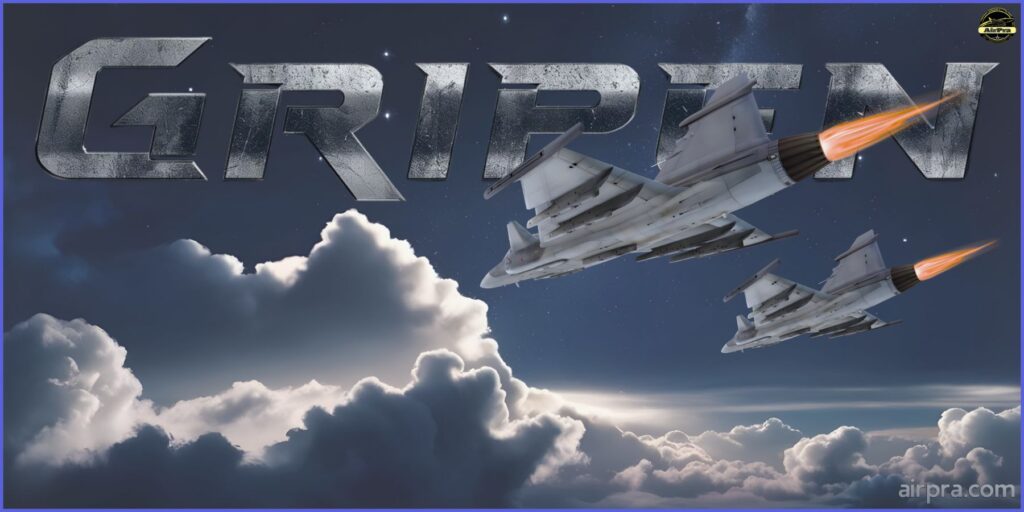
Let’s dive deep into the latest evolution of the JAS 39 Gripen — a remarkable leap forward in the legendary Gripen series. Once known as the Gripen NG (Next Generation) or Super JAS, it now takes centre stage as the JAS 39E/F Gripen, redefining the very standards of modern air combat with its advanced design, agility, and cutting-edge technology.
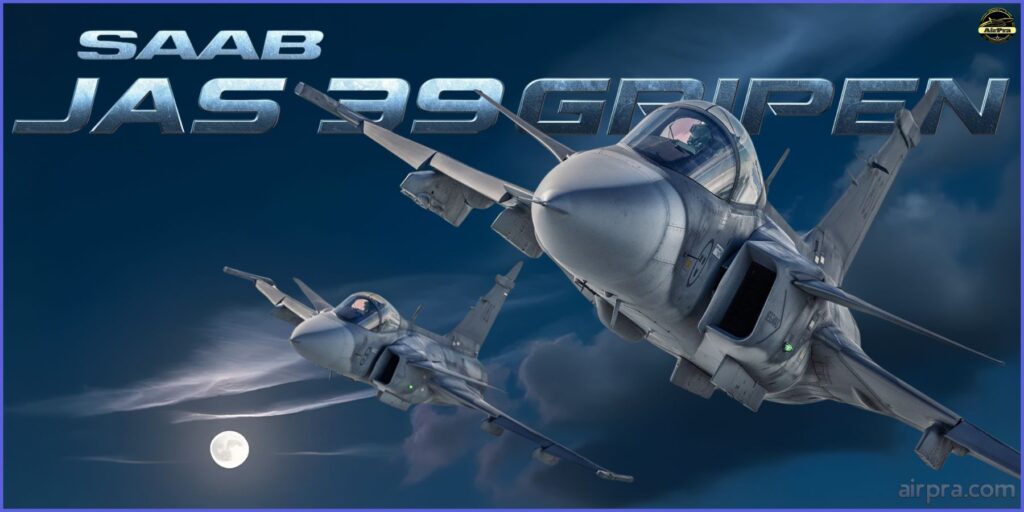
From Vision to Vanguard: The Making of the Saab JAS 39 Gripen
The JAS 39 Gripen is a versatile, single-engine, supersonic fighter jet crafted by Sweden’s renowned aerospace innovator Saab AB. Designed for maximum agility and efficiency, it features a sleek delta wing paired with forward canards, a relaxed-stability airframe, and advanced fly-by-wire controls — all coming together to create one of the most responsive and adaptable combat aircraft in the world.
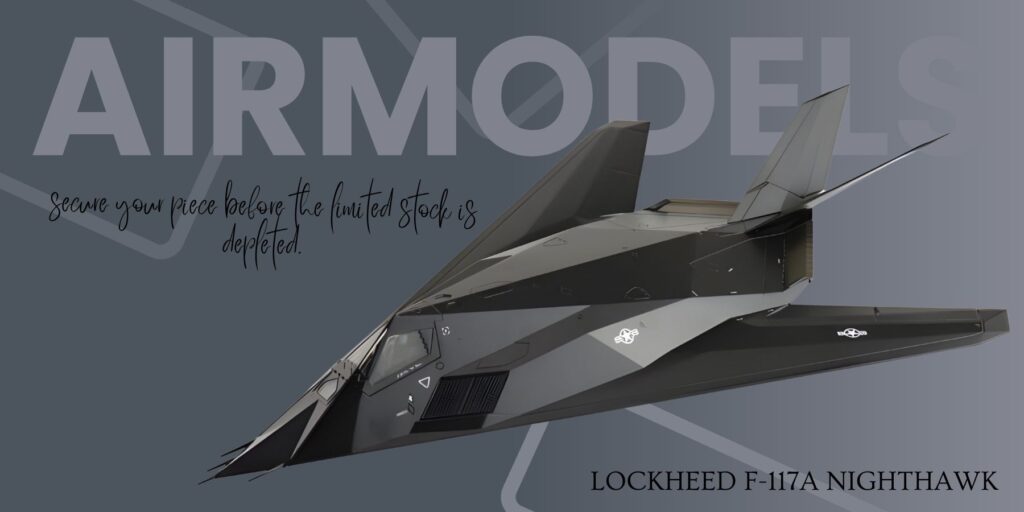
In the late 1970s, Sweden sought a successor to its ageing Saab 35 Draken and its fleet of Saab 37 Viggen. The Swedish Air Force demanded an affordable Mach 2 fighter with extraordinary short-field performance—capable of taking off from rudimentary runways that were part of the Bas 90 system, measuring just 800 meters long and 17 meters wide.
The objective was clear: design an aircraft smaller than the Viggen, ____ yet equal or superior in payload and range, with the versatility to serve as a fighter, ____ attacker, and sea reconnaissance platform.
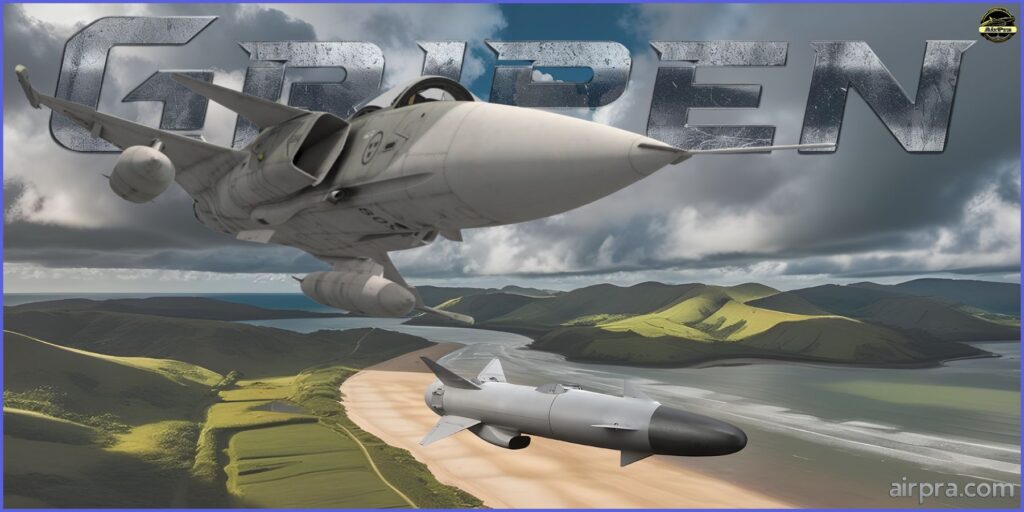
To fulfil all these demanding requirements, several foreign designs were carefully studied. However, the Swedish government ultimately chose to pursue an indigenous fighter design rather than accepting any foreign aircraft design by assigning the task to Swedish Saab AB.
By 1979, a formal study was launched, calling for a highly versatile platform capable of ‘JAS’, which stands for Jakt (air-to-air), Attack (air-to-surface), and Spaning (reconnaissance). This concept envisioned a true multirole, or swing-role, fighter aircraft, one that could seamlessly perform multiple missions within a single sortie.
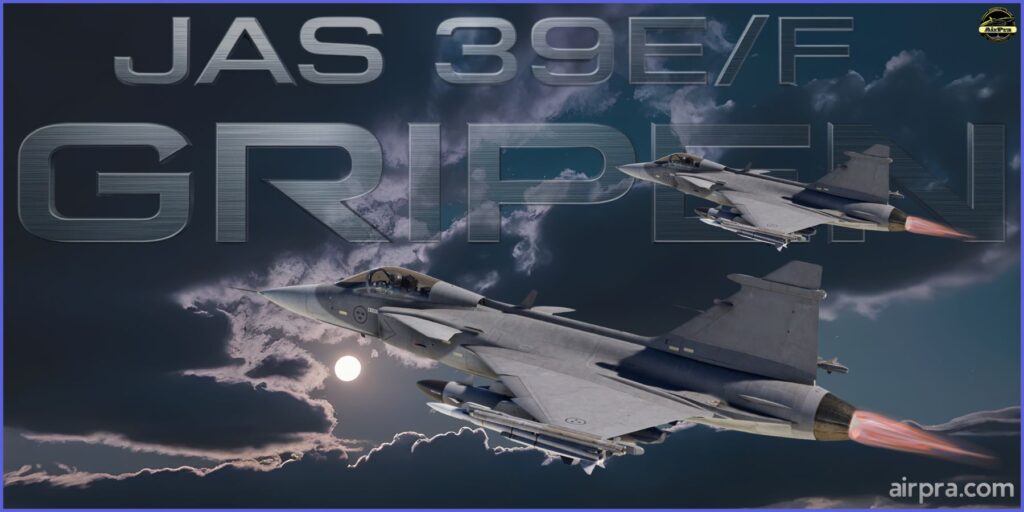
During this process, several Saab proposals were reviewed, with ‘Project 2110’ ultimately standing out as the most promising and being recommended to the government by the Defence Materiel Administration (FMV).
By 1980, the ‘JAS Industry Group’ had also been established, bringing together Sweden’s major defence industries to turn this ambitious vision into reality.
The preferred design emerged as a lightweight, single-engine fighter, featuring fly-by-wire technology, canards, and an aerodynamically unstable configuration for maximum agility. For its powerplant, Sweden selected the Volvo-Flygmotor RM12, a license-built derivative of the General Electric F404 engine.
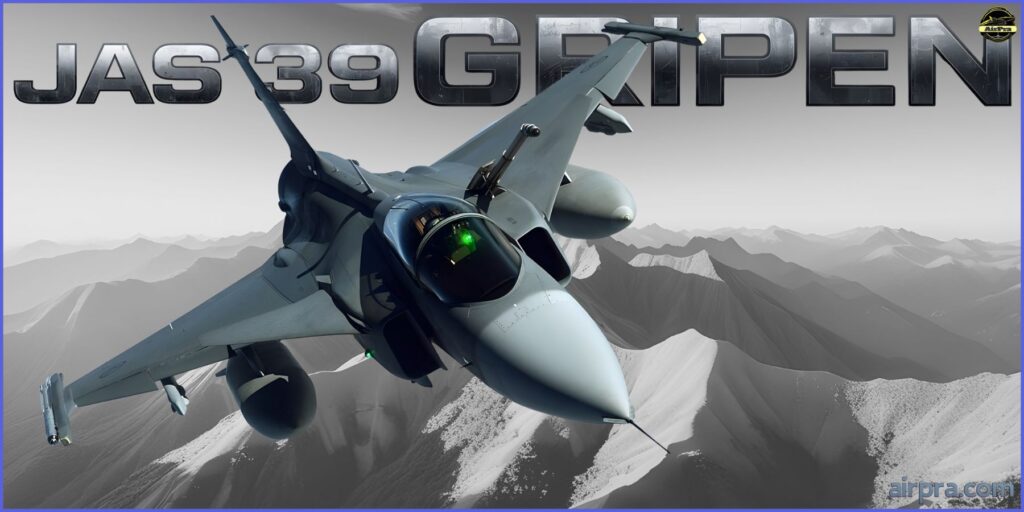
On June 30, 1982, following approval from the Swedish Riksdag, FMV finalised a contract with Saab worth SEK 25.7 billion to develop five prototypes and an initial production batch of thirty aircraft. Just a few months later, in September 1982, the jet received its official name — “Gripen” (Griffin) — chosen through a national public contest.
Saab proudly unveiled the first Gripen on April 26, 1987, and on December 9, 1988, the prototype 39-1 took to the skies for its maiden 51-minute flight, expertly piloted by Stig Holmström.

Redefining Air Superiority: Developments of the JAS 39E/F Gripen
In June 2010, Saab announced that Sweden intended to modernise the Gripen into the next-generation variant, designated as Gripen NG. According to the plan, the upgraded fighter was expected to enter service by 2017, or possibly earlier, depending on export commitments.
Later, in September 2015, Lennart Sindahl, head of Saab Aeronautics, revealed that a specialised Electronic Warfare (EW) version of the two-seat Gripen F could also be developed, further expanding the aircraft’s versatility and appeal on the global stage.
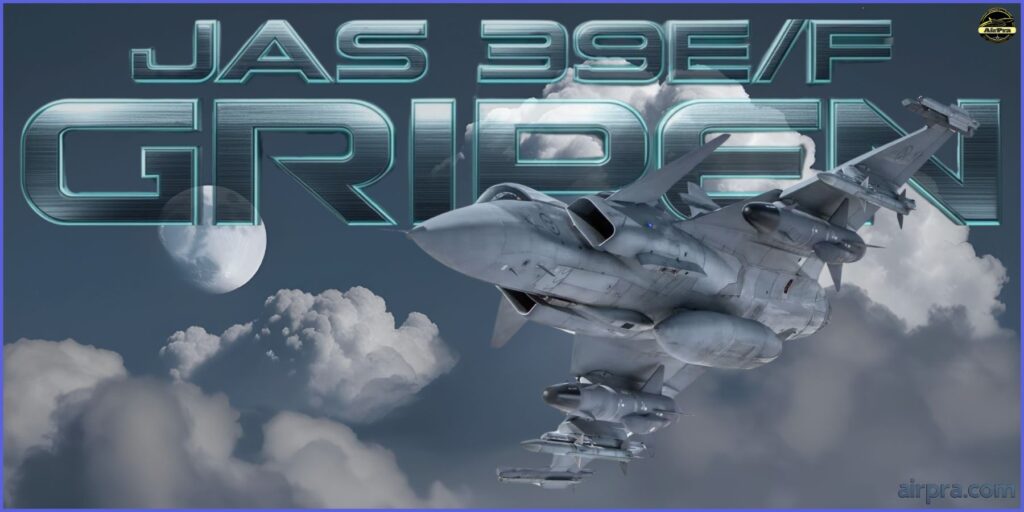
The Gripen series entered a new era with the creation of the JAS 39E/F, earlier known as the Gripen NG (Next Generation) or Super JAS. Deliveries to the Swedish Air Force and Brazilian Air Force began in 2019, marking a major milestone in its evolution.
Compared to the earlier JAS 39C, the new Gripen E features a larger fuselage, a more powerful engine, increased payload capacity, a redesigned cockpit, an upgraded avionics suite, and a state-of-the-art electronic warfare system — among many other advancements.
The first Gripen E was unveiled on May 18, 2016, and completed its maiden flight on June 15, 2017. As of 2025, around 300 Gripen fighters across all variants (A–F) have been delivered to Sweden, Brazil, and several other international users.

Avionics and Sensor Suite _
All of the Gripen’s avionics are seamlessly integrated through five MIL-STD-1553B digital data buses, forming an advanced system architecture known as sensor fusion. This deep integration transforms the Gripen into a truly programmable fighter, allowing software upgrades that boost performance, expand mission capabilities, and easily accommodate new technologies.
The aircraft’s software framework is built on the Ada programming language, which has powered its primary flight control systems since 1996, ensuring reliability and adaptability across all production models.
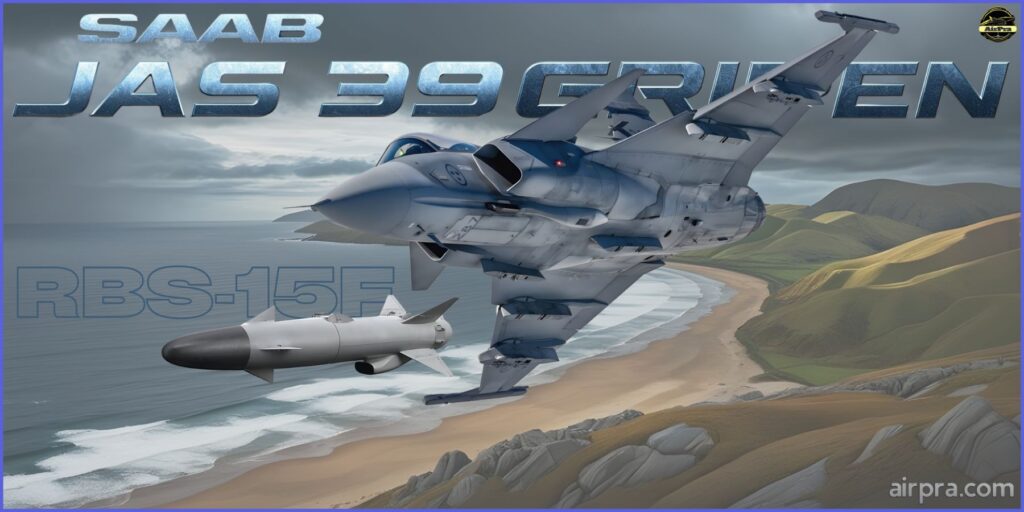
The latest Gripen E/F is equipped with a new AESA radar, designated Raven ES-05, which offers a greatly expanded field of view and an improved detection range of approximately 300 km.
In addition, the aircraft integrates the Skyward-G Infrared Search and Track (IRST) system, capable of passively detecting thermal emissions from both aerial and ground targets within its vicinity.
The advanced sensor suite of the Gripen E is also claimed to detect low radar cross-section (RCS) targets at beyond-visual-range distances, significantly enhancing its situational awareness and combat effectiveness.
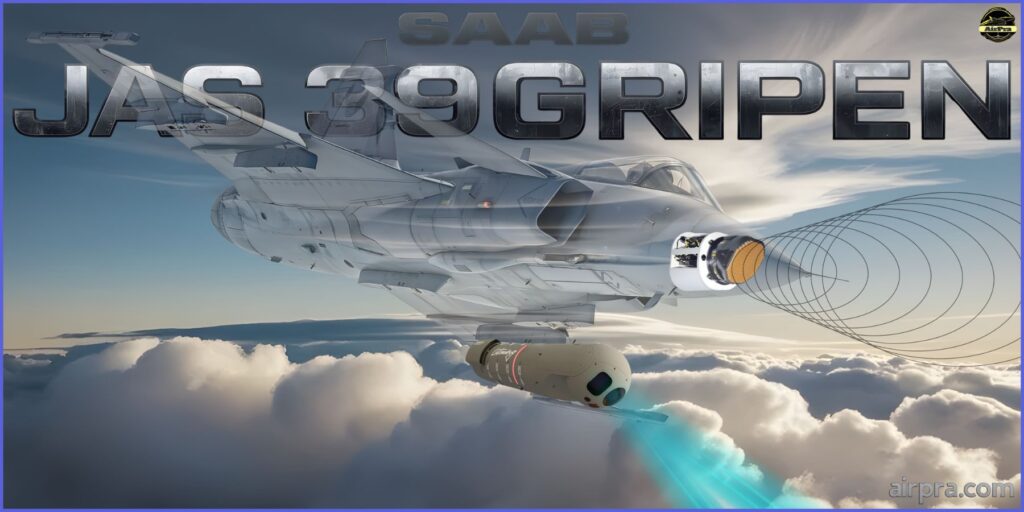
The Gripen’s Electronic Countermeasures (ECM) system can efficiently suppress and significantly degrade an adversary’s ability to detect, track, and target the aircraft. It provides full 360-degree spherical, wide-spectral coverage, effectively creating an electronic shield that enhances survivability in highly contested environments.
The system operates seamlessly with the Radar Warning Receiver (RWR), Missile Approach Warning System (MAWS), BOL dispenser, and other passive and active countermeasures, ensuring comprehensive protection against a wide range of threats.
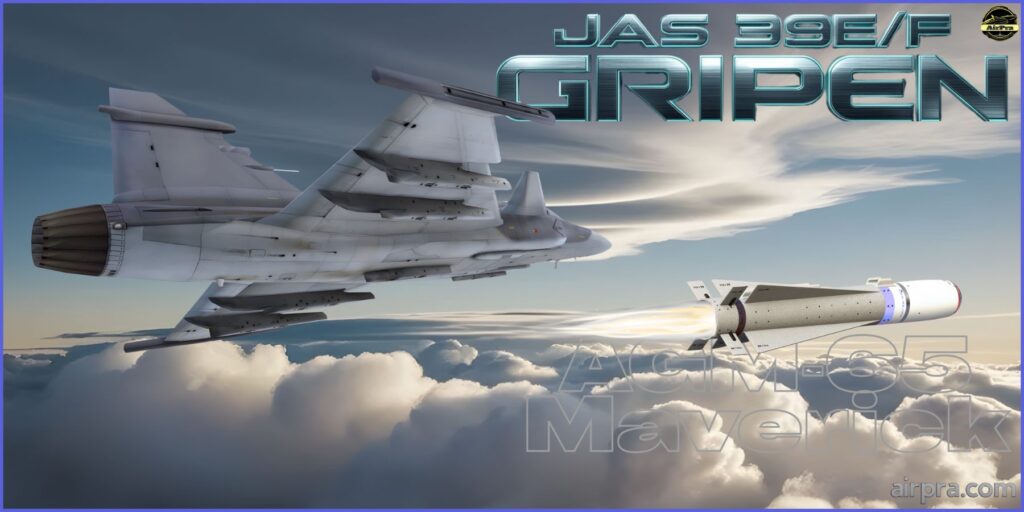
Cockpit _
The Gripen E/F cockpit features one of the most advanced display systems in its class, designed for superior situational awareness and mission flexibility.
Its 19 x 8-inch full-colour Wide Area Display (WAD) serves as the central interface, allowing pilots to manage multiple systems, zoom on sensor data, and customise layouts through intuitive touch and gesture inputs.
The WAD integrates radar, IRST, maps, weapons status, and tactical data into a single, streamlined view for complete operational control.
A large-area HUD presents key flight, targeting, and navigation information directly in the pilot’s line of sight, reducing the need to look down and allowing full focus on the battlespace. It is also compatible with night vision systems, enabling effective operations in low-visibility conditions.
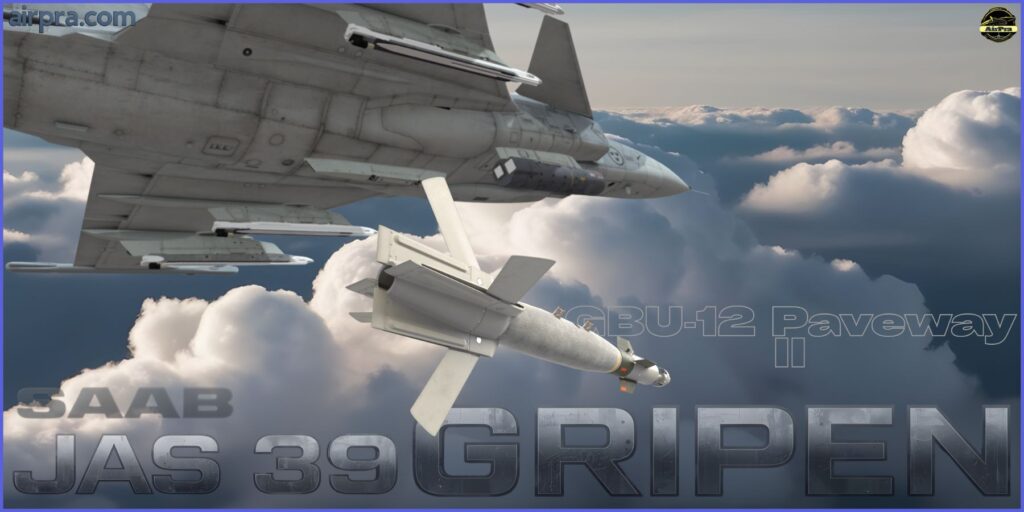
The Cobra Helmet-Mounted Display System (HMDS), developed by BAE Systems and Saab, allows the pilot to aim weapons simply by looking at the target, a capability especially effective with short-range missiles like IRIS-T or AIM-9.
Every element of the Gripen E cockpit is designed to reduce pilot workload and maximise mission efficiency. It employs the Gripen Human-Machine Interface (HMI) logic, optimised for quick, minimal-input control during high-stress combat situations.
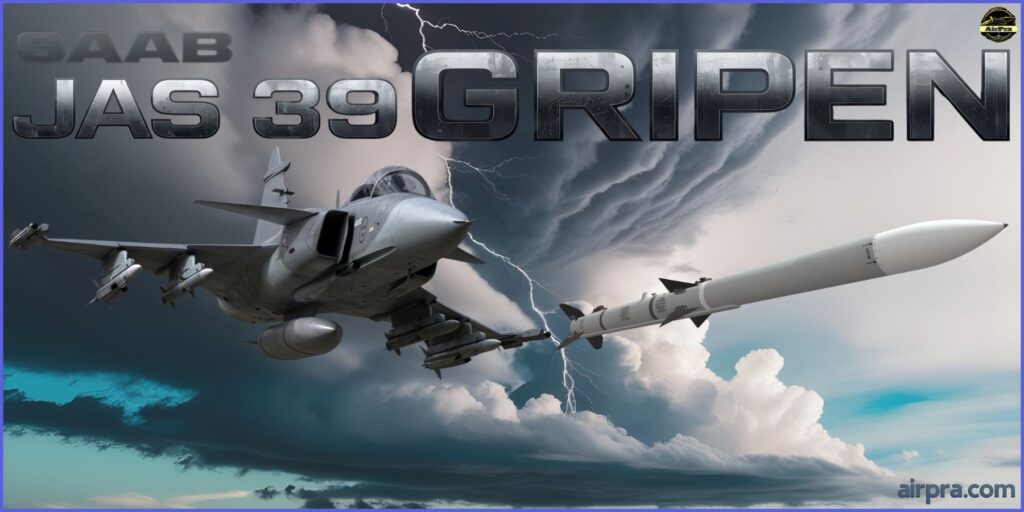
Engine _
The Gripen E/F is powered by a single General Electric F414G afterburning turbofan, an upgrade over the earlier RM12 engine, delivering approximately 98 kN of thrust. This engine provides superior acceleration, climb rate, and manoeuvrability, while supporting higher payloads and extended range.
Equipped with FADEC for precise digital control and optimised for fuel efficiency, it ensures reliable, low-maintenance operation.
Fully integrated with the aircraft’s avionics and flight control systems, the F414G enables the Gripen E/F to perform demanding multi-role missions with exceptional agility and operational flexibility.
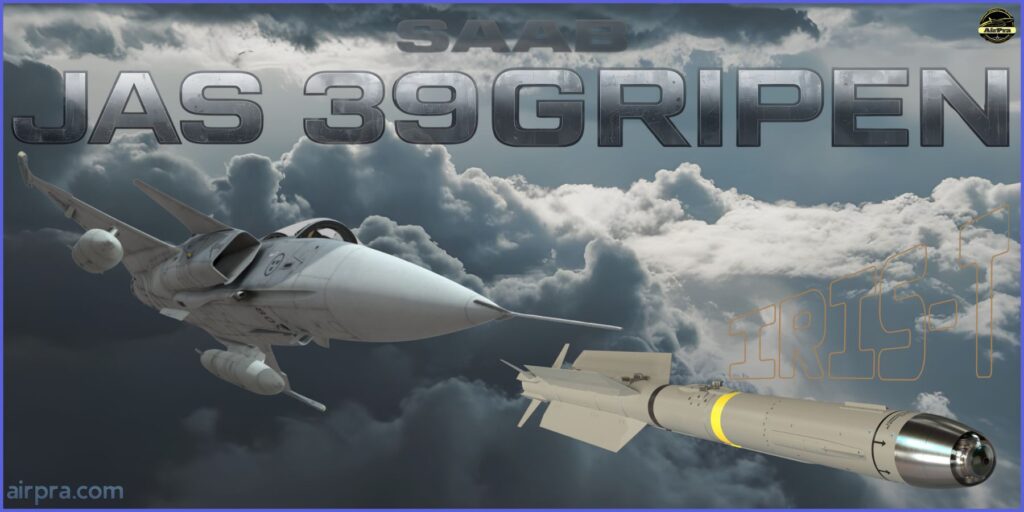
Equipment and Armament Configuration _
In flight, the Gripen can carry up to 6,500 kg (14,330 lb) of assorted armaments and equipment on eight hardpoints—two under the fuselage, two under each wing, and one on each wingtip.
Supported stores include external sensor pods for reconnaissance and target designation (for example, Rafael’s LITENING targeting pod), one ECM pod, one Digital Joint Reconnaissance Pod, and BriteCloud expendable active decoys (EADs).
The aircraft is also fitted with a 27 mm Mauser BK‑27 revolver cannon with 120 rounds, giving it a balanced mix of sensors, self‑protection, and weapons for multi‑role missions.

The Gripen E/F can carry a powerful and flexible mix of weapons for air, ground, and sea missions. It can be fitted with up to six short‑range missiles, such as the IRIS‑T or AIM‑9 Sidewinder, for close combat, and four long‑range air‑to‑air missiles, such as the MBDA Meteor or AIM‑120 AMRAAM, for beyond‑visual‑range engagements.
For ground attack, it can carry four AGM‑65 Maverick missiles, or two Taurus KEPD 350 cruise missiles for long‑range strikes, or four GBU‑12 Paveway II laser‑guided bombs for precision hits.
For anti‑ship missions, it can carry two RBS‑15F missiles, and for an accurate, wider‑area strike, it can load up to sixteen GBU‑39 Small Diameter Bombs, allowing the aircraft to switch roles quickly and engage many target types.
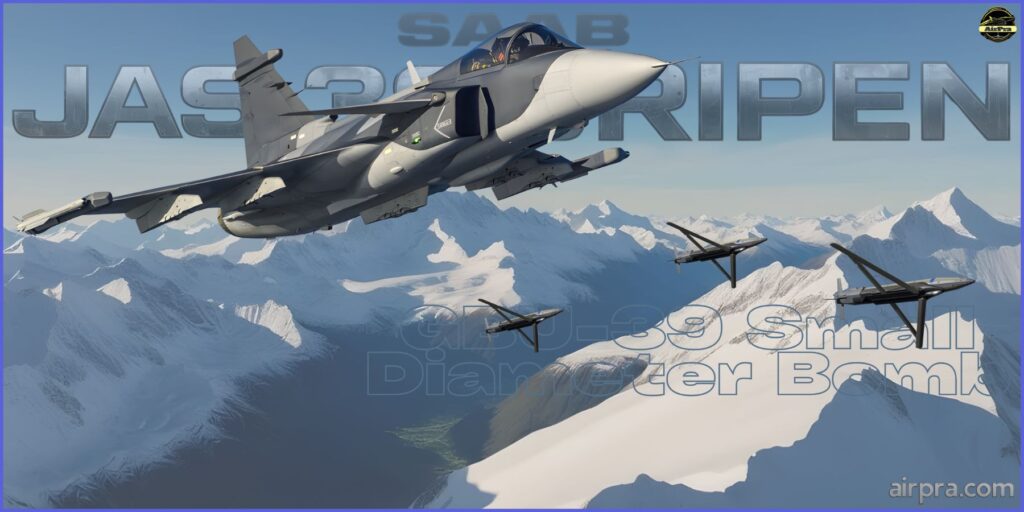
Note to Our Readers!
Information in our articles may become outdated over time. Please consult current sources for the latest updates. We’re committed to delivering quality content on military topics, and your support through affiliate purchases helps us continue.
Feel free to share suggestions or content requests in the comments—your feedback drives us forward. Thank you for being part of our community!
